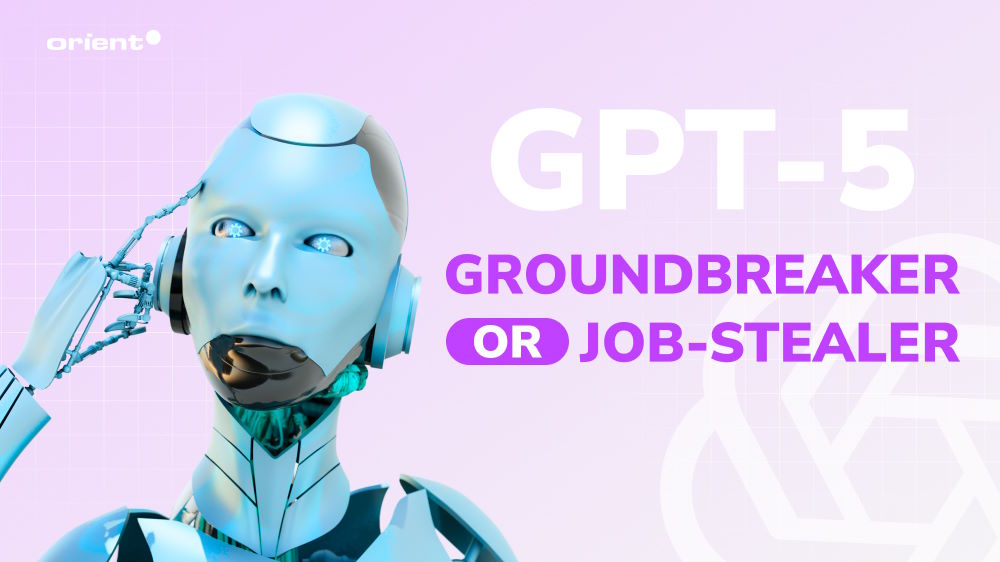
2024 Vision: Embracing the Mobile App Development Trend Ahead
The latest mobile app development trend involves AI, cloud computing, voice recognition, super apps, and stronger mobile security.


Artificial General Intelligence (AGI) has been making waves in recent years, and when OpenAI released ChatGPT over a year ago, it took the world by storm, leaving the public and enterprise customers in awe of its capabilities. The natural language processing capabilities of this AI model left many in awe and sparked a flurry of excitement in the tech community. However, the landscape of AI is rapidly evolving, and new competitor AI models are emerging, such as Google’s Bard and Anthropic, challenging OpenAI’s dominance.
In a discussion with Bill Gates in January 2024, OpenAI CEO Sam Altman confirmed that work on GPT-5 had begun. This confirmation came after Altman had previously affirmed it during a speech at the Y Combinator alumni reunion, his former venture capital firm, last September. However, no information was given about a potential release date, leaving many to speculate about when this new model might become available. The expectations are sky-high, fueled by our collective imagination and the advancements in AI technology. But, amidst all the hype, it’s essential to separate fact from fiction and understand what GPT-5 can realistically achieve.
Will GPT-5 be a groundbreaker, revolutionizing industries and transforming the way we live and work? Or will it be a job-stealer, automating tasks and leaving many people out of work? In this article, we’ll explore the potential of GPT-5, drawing insights from its predecessors and the trajectory of AI technology. We’ll examine the opportunities and challenges that GPT-5 presents and try to separate fact from fiction. So, buckle up and join us on this exciting journey into the future of AI technology.
Key Takeaways

GPT-5 stands for Generative Pre-trained Transformer (GPT), the latest iteration in a series of powerful large language models (LLM) developed by OpenAI. Unlike traditional programming, which relies on explicit instructions, GPT-5 learns by analyzing massive amounts of text data. This allows it to grasp the nuances of human language, including grammar, syntax, and even stylistic elements. This AI powerhouse is built upon the rich legacy of its predecessors, yet it stands out with its unprecedented linguistic fluency and versatility. GPT-5 is not merely a conversational AI; it’s a harbinger of a new era where machines can assist and augment human capabilities in ways previously deemed the realm of science fiction.
The secret behind GPT-5’s impressive capabilities lies in its complex architecture. It utilizes a neural network structure known as a transformer, which allows it to analyze relationships between words and concepts within a sentence. This enables GPT-5 to not only understand the meaning of individual words in user prompts but also grasp the context and overall flow of language.
Furthermore, GPT-5 is pre-trained on a massive dataset of text, code and context window, providing it with a vast knowledge base to draw from when generating text, translating languages, or answering questions. The scale of this training data is what truly sets GPT-5 apart from its predecessors. Compared to previous versions, GPT-5 is able to process information more efficiently, generate more creative and human-like text formats, and perform complex tasks with a higher degree of accuracy.
Importantly, GPT-5 places a strong emphasis on ethical AI development. Measures have been implemented to mitigate biases and ensure responsible use, reflecting the growing awareness of the ethical implications of AI technology.

GPT-5 isn’t a revolutionary anomaly, but rather the culmination of years of research and refinement.
With the rise of GPT-5, a wave of anxiety has emerged regarding its potential impact on the job market. Visions of AI robots replacing human workers dominate headlines, fueling fears of widespread unemployment. But upon a closer look, a more nuanced picture emerges. While GPT-5 undoubtedly possesses impressive capabilities, it’s unlikely to become a full-fledged job-stealer. Instead, it’s more likely to function as a powerful tool, augmenting human capabilities and ushering in a new era of collaborative work.
Here’s why the “job-stealer” narrative might be overblown:
While the potential of GPT-5 is undeniable, it’s crucial to acknowledge that this technology is still under development. To truly separate fact from fiction, we must maintain a balanced view, acknowledging both its potential and its limitations.
At Orient Software, we are experts in AI development, committed to responsible innovation and harnessing the power of AI for good. If you’re interested in exploring how GPT-5 or other AI technologies can benefit your business, we encourage you to partner with us. Together, we can navigate the exciting future of AI and ensure it serves humanity’s best interests.
The latest mobile app development trend involves AI, cloud computing, voice recognition, super apps, and stronger mobile security.
Are you excited about the upcoming trends in IT and software outsourcing? Let’s do the guessing in this article.
eCommerce technology trends are constantly evolving, but that doesn't mean they're hard to keep up with. Find out what will rule eCommerce industry by 2022.
Let’s create a competitive edge by applying these best IT outsourcing trends for your business.
Let’s make predictions about the latest software development trends for 2024. What will be hot and trendy next year? Let’s find out.



